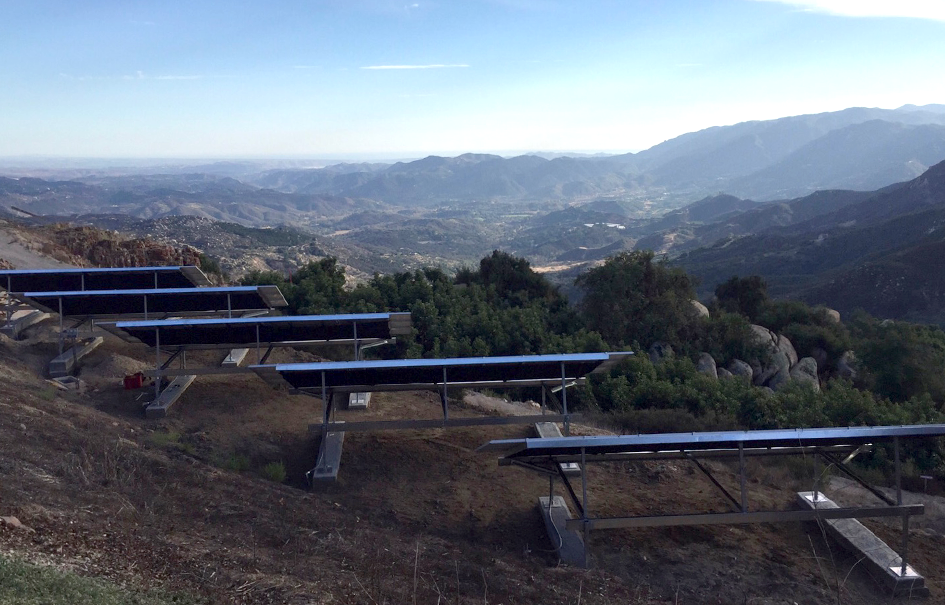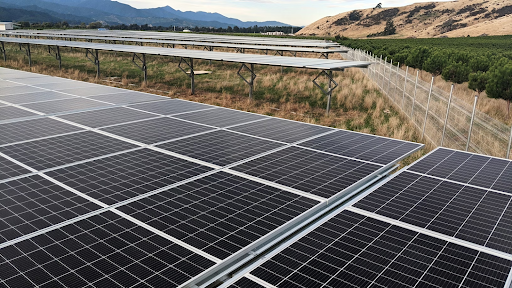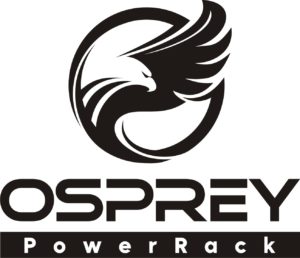Ground-Mount Solar Tracking System: Pros & Cons
Key Takeaways
- Ground-mount solar tracking systems can increase energy production by 25% compared to fixed systems.
- They are best suited for areas with ample space and minimal shading.
- Initial costs are higher, but the increased efficiency can lead to faster payback periods.
- Maintenance requirements are higher due to moving parts.
- Nuance Energy’s Osprey PowerRack™ is cost-effective and faster to install thanks to its modular design which doesn’t require heavy machinery.
What Is A Ground-Mount Solar Tracking System
A ground-mount solar tracking system improves the efficiency of solar panels by allowing them to follow the sun’s path throughout the day.
Solar tracking systems adjust the angle of the solar panels in real-time so they are always perpendicular to the sun’s rays. This can be achieved through:
- Active Solar Trackers: These use motors and sensors to continuously adjust the panel’s position based on sunlight intensity.
- Passive Solar Trackers: These rely on thermal expansion and contraction to move the panels without motors, though they are less common.
There are two main types of solar trackers:
- Single-Axis Trackers: They rotate on one axis to track the sun from east to west.
- Dual-Axis Trackers: They rotate on two axes to allow for adjustments from east to west and up and down to optimize sunlight capture throughout the year.
| Nuance Energy is your superior solution for Ground-Mount solar. Our patented foundation technology, in the Osprey PowerRack™, allows for rapid installation using only handheld tools, significantly reducing both time and costs compared to traditional racking systems. This cutting-edge technology works for residential and commercial installations, and Nuance Energy empowers solar installers to take back control of their installation schedules, control project COGS, gain market share, increase the speed of installation, and reduce costs and labor. In contrast, a traditional ground-mount is much more unpredictable, slower, and costly.
Find out how Nuance Energy can accelerate your solar projects with the Osprey PowerRack™ line, and boost your profitability. Contact us today to discuss our innovative ground-mount solutions. |
Pros Of Ground-Mount Solar Tracking System

Ground-mount solar tracking system follows the sun’s trajectory to maximize energy production.
- Increased Energy Efficiency: By following the sun throughout the day, the panels receive more direct sunlight – especially during early morning and late afternoon – which can boost energy production by 25% compared to fixed systems.
- Improved ROI: The increased energy yield from a tracking system translates to faster returns on investment.
- Adaptability to Varied Terrain: Ground-mount tracking systems are flexible in design and can adapt to different terrains – including uneven or sloped landscapes where optimal solar orientation would be difficult to achieve with a fixed system.
- Energy Production in Low Light Conditions: These systems can capture sunlight more effectively during periods of low solar angles, such as early mornings or cloudy days to further increase the energy yield.
Cons Of Ground-Mount Solar Tracking System
- Higher Initial Cost: Ground-mount solar tracking systems are more expensive compared to fixed-tilt systems due to the additional components like motors, sensors, and control systems required for tracking.
- Increased Maintenance Needs: The mechanical parts in a tracking system, such as motors and gears, are prone to wear and tear, so they will need regular maintenance.
- Complex Installation Process: The additional moving parts and electronics require specialized knowledge, which increases the installation time.
- Vulnerability to Weather Conditions: Tracking systems, due to their moving parts and reliance on electronic components, can be more vulnerable to extreme weather conditions. High winds, snow accumulation, and storms can disrupt or damage the tracking system.
Key Considerations Before Using Ground-Mount Solar Tracking System
- Site Assessment: Evaluate the location for optimal sun exposure and minimal shading from trees or buildings.
- Cost Considerations: Assess the initial investment, which may be higher due to the complexity of tracking systems.
- Maintenance Requirements: Be prepared for regular inspections and potential repairs of mechanical components.
- Local Regulations: Check zoning laws and permitting requirements that may affect installation.
- Weather Resistance: Consider the system’s durability against extreme weather conditions, such as high winds.
- Type of Tracking System: Decide between single-axis and dual-axis trackers based on geographic location and energy needs.
- Aesthetic Impact: Consider how the installation may affect the visual appeal of the property.
- Integration with Storage Solutions: Evaluate options for combining with battery storage for improved energy management.
Nuance Energy And Its Osprey PowerRack™ System

Use Nuance Energy’s Osprey PowerRack™ for cost-effective installation.
We are a pioneering company in the solar energy sector, offering innovative ground-mount solar solutions, like our patent-pending Osprey PowerRack™ system.
Osprey PowerRack™ System
Our Osprey PowerRack™ is a ground-mount solar racking system that has transformed the way solar is installed. Here’s why:
- Design and Structure:
-
-
- Modular Design: The Osprey PowerRack™ has a fully modular design with universal components, which allows for easy assembly and adaptability.
- Earth Anchor Foundation Technology: This innovative foundation method eliminates the need for time-consuming concrete or helical screw foundations.
- Wind and Snow Load Capacity: The system is engineered to withstand wind speeds of up to 140 mph and snow loads of up to 60 psf.
- Tilt Angle Adjustability: It can be set at tilt angles ranging from 10° to 35°, with custom options available up to 45°.
-
- Installation Efficiency:
-
-
- Rapid Installation: A small crew (3-4 people) can assemble a 10kW structure in about an hour using standard handheld tools.
- No Heavy Machinery Required: No expensive heavy equipment is needed for installation, which reduces upfront costs for contractors.
- No Geotechnical Reports Needed: The Osprey PowerRack™ uses real-time soil condition anchor load testing to eliminate the need for costly geotechnical studies.
-
- Cost Savings:
-
- Labor Cost Reduction: Less skilled labor is needed to complete installations, which lowers costs. A trained crew can increase their output significantly over time.
- Overall Project Savings: Using the Osprey PowerRack™, a standard 2MW installation can save approximately $145,000, compared to traditional methods.
Frequently Asked Questions (FAQs)
How do solar trackers work?
Solar trackers use motors and sensors to adjust the angle of solar panels throughout the day so they are always optimally positioned to capture sunlight.
Are solar tracking systems worth the investment?
Solar tracking systems can be a worthwhile investment as they can significantly increase energy production.
What is the lifespan of a solar tracking system?
Generally, these systems are designed to last 20-25 years, similar to fixed solar panels.
Can solar tracking systems be used in residential setups?
Yes, solar tracking systems can be used in residential setups, provided there is enough space for installation and the local climate is suitable.
How do Nuance Energy’s products maintain durability against corrosion?
Our Osprey PowerRack™ uses galvanized earth anchors and stainless-steel rods and cables to prevent corrosion issues. These materials also come with a 20-year warranty.
Save Time & Money on Your Next Solar Project
Request a QuoteRECENT POSTS
- DPW Solar vs Nuance Energy Mounted Solar Options: Cost & Benefits
- Geotechnical Report Cost & Requirements For Solar Projects
- Are Solar Panels Worth It In Nevada? Costs & Options
- OSPREY PowerRack Ground Mount System Compatibility: Single- and Dual-Axis Trackers
- Rammed Earth Foundation For Solar Arrays: Cost, Pros & Cons
- Agrivoltaics Explained: Solar & Agriculture Combined
- Large Scale Solar Systems Options: Pros & Cons
- Best Solar Options For Farms & Agriculture: Cost, Pros & Cons
- Unirac vs MT Solar Mounted Options: Cost & Benefits
- IronRidge vs Grengy Mounted Solar Options: Cost & Benefits

